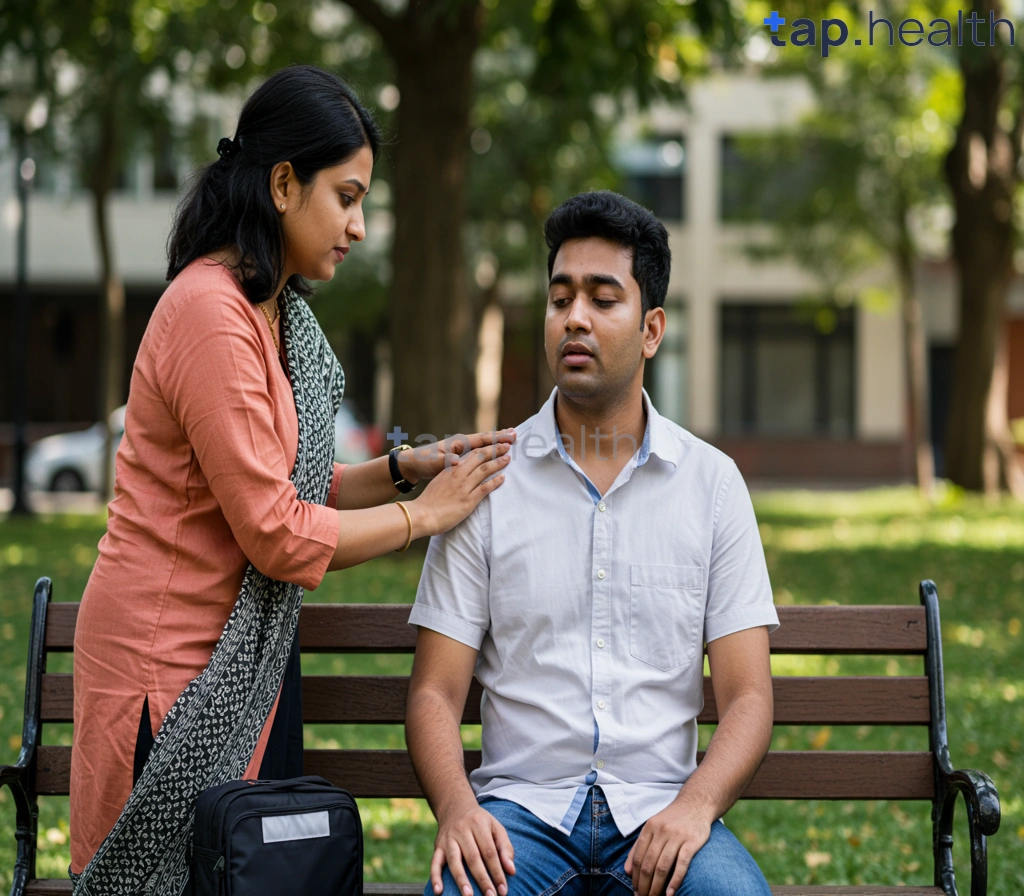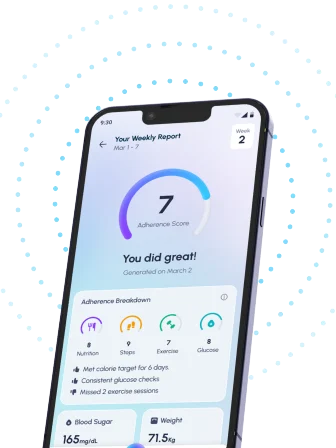Table of Contents
- Lowering High Diastolic Blood Pressure: A Diabetes Prevention Guide
- High Diastolic Blood Pressure & Diabetes: Prevention Strategies
- Managing High Blood Pressure: Key Steps for Diabetes Prevention
- Understanding Diastolic Blood Pressure: Your Diabetes Risk
- Is High Diastolic Blood Pressure Increasing Your Diabetes Risk?
- Frequently Asked Questions
- References
Are you concerned about your blood pressure, especially the diastolic number? Many people focus solely on systolic pressure, but managing high diastolic blood pressure is equally crucial, particularly if you’re aiming to prevent diabetes. This blog post explores practical strategies for keeping your diastolic reading in a healthy range, significantly reducing your risk of developing type 2 diabetes. We’ll delve into lifestyle modifications, dietary adjustments, and the importance of regular monitoring. Let’s get started on your journey to better heart health and diabetes prevention!
Lowering High Diastolic Blood Pressure: A Diabetes Prevention Guide
High diastolic blood pressure, the bottom number in a blood pressure reading, is a significant risk factor for developing type 2 diabetes, particularly prevalent in Indian and tropical countries. Maintaining a healthy diastolic pressure, ideally below 90 mmHg, and aiming for below 80 mmHg as per some guidelines, is crucial for diabetes prevention. For people with diabetes, the target is generally below 140/90 mmHg, though some guidelines recommend aiming for below 130/80 mmHg. This is even more critical in regions with high rates of diabetes and related complications.
Lifestyle Changes for Lowering Diastolic Blood Pressure
Several lifestyle modifications can significantly impact your diastolic blood pressure. Regular exercise, even a brisk 30-minute walk most days of the week, helps regulate blood pressure. Dietary changes are also essential. A diet rich in fruits, vegetables, and whole grains, low in saturated and trans fats, and moderate in sodium, is vital. Consider incorporating traditional Indian spices like turmeric and cinnamon known for their anti-inflammatory properties. Managing stress through techniques like yoga and meditation is equally important, as chronic stress contributes to high blood pressure. In tropical climates, staying hydrated is crucial, combating dehydration which can elevate blood pressure. Managing cholesterol is also vital, as it’s closely linked with heart health and diabetes risk. For more information, check out How to Manage Cholesterol Levels with Diabetes?
Seeking Professional Guidance
Regular monitoring of your blood pressure is key. Consult with your doctor or a qualified healthcare professional for personalized advice and regular check-ups. They can help you establish a tailored plan, including medication if necessary, to manage your blood pressure effectively and reduce your risk of developing diabetes. Early intervention and consistent management are crucial for long-term health and well-being, particularly in high-risk populations. Don’t hesitate to seek professional help; it’s an investment in your health and future. Remember, proactive management is the best diabetes prevention strategy. Protecting your heart is paramount, and Protect Your Heart from Diabetes: 5 Essential Steps offers valuable insights on this crucial aspect of diabetes prevention.
High Diastolic Blood Pressure & Diabetes: Prevention Strategies
High diastolic blood pressure, the bottom number in a blood pressure reading, is a significant concern, especially in individuals with diabetes. In India, a startling statistic reveals that over 60% of people with diabetes also suffer from hypertension. This alarming figure highlights the urgent need for effective prevention strategies, particularly in tropical regions like India and its neighboring countries where these conditions are prevalent. Managing diastolic blood pressure is crucial not only for overall well-being but also for preventing serious complications associated with diabetes.
Lifestyle Modifications for Diastolic Blood Pressure Control
Adopting a healthy lifestyle is paramount. This includes regular physical activity, aiming for at least 30 minutes most days of the week. Dietary changes are also key; focusing on a diet rich in fruits, vegetables, and whole grains while limiting saturated fats, sodium, and processed foods can significantly impact blood pressure. Maintaining a healthy weight is another crucial element; even modest weight loss can lead to considerable improvements in blood pressure levels. Remember, consistent effort is key in managing both diabetes and hypertension. For more tips on effective diabetes management, check out our guide: 10 Proven Tips for Effective Diabetes Management.
Seeking Professional Medical Advice
Regular check-ups with your doctor are essential. They can monitor your blood pressure and diabetes levels, adjust medication as needed, and provide personalized guidance. In India, access to quality healthcare varies, but proactive engagement with healthcare professionals is vital to prevent complications and manage both conditions effectively. Don’t hesitate to discuss any concerns you may have regarding your blood pressure and diabetes management with your doctor. They can help you create a tailored plan to reduce your risk of serious health issues. Early detection and intervention are critical for preventing severe complications associated with uncontrolled high diastolic blood pressure and diabetes. To learn more about preventing long-term complications, read our article on How to Prevent Long-Term Complications of Diabetes: Easy Tips.
Managing High Blood Pressure: Key Steps for Diabetes Prevention
High diastolic blood pressure is a significant risk factor for developing type 2 diabetes, especially prevalent in Indian and tropical countries. Studies show that over 30% of diabetes patients have HbA1c levels above 9%, highlighting the urgent need for effective blood pressure management. Controlling your blood pressure is a crucial preventative measure against this debilitating disease.
Lifestyle Modifications for Blood Pressure Control
Several lifestyle changes can significantly impact your blood pressure. Regular exercise, even a moderate 30-minute walk most days of the week, is crucial. Adopting a heart-healthy diet, rich in fruits, vegetables, and whole grains while limiting processed foods, saturated fats, and sodium, is equally important. In many Indian and tropical regions, readily available spices like turmeric and ginger may also offer beneficial anti-inflammatory properties, supporting overall cardiovascular health. Remember to monitor your sodium intake, a common concern in many regional cuisines.
Seeking Professional Guidance
Regular check-ups with your doctor are vital. They can monitor your blood pressure, assess your risk for diabetes, and recommend appropriate medication if lifestyle changes alone are insufficient. Early detection and intervention are key to preventing diabetes and managing high blood pressure effectively. Discuss your family history of diabetes and hypertension with your physician as well, as genetic predisposition plays a significant role. Managing stress effectively can also play a significant role in overall health, so learning Effective Stress Management Tips for Better Diabetes Control is crucial.
Actionable Steps for Prevention
Start by scheduling a health checkup today. Focus on incorporating simple, sustainable lifestyle changes into your daily routine. Remember, managing high diastolic blood pressure is not just about medication; it’s about making conscious choices that protect your long-term health and well-being. Consult with a healthcare professional to create a personalized plan that suits your needs and regional context. For more comprehensive guidance on diabetes management, check out our guide on 10 Proven Tips to Effectively Manage Diabetes | Simple Guide.
Understanding Diastolic Blood Pressure: Your Diabetes Risk
High blood pressure, often called hypertension, significantly increases your risk of developing diabetes, especially in tropical and Indian climates where lifestyle factors can exacerbate the issue. Understanding the two types of blood pressure readings—systolic and diastolic—is crucial. Diastolic blood pressure, the bottom number in your reading, represents the pressure in your arteries when your heart rests between beats. A consistently high diastolic reading (typically above 80 mmHg) indicates a serious health concern and elevates your risk of developing type 2 diabetes.
Why Diastolic Pressure Matters for Diabetes Prevention
Elevated diastolic blood pressure damages blood vessels over time, reducing their ability to efficiently deliver insulin and regulate blood sugar levels. This damage is compounded by other risk factors prevalent in Indian and tropical countries, such as a higher prevalence of obesity, unhealthy diets, and a lack of regular physical activity. The impact is profound: Research shows that smokers with diabetes face a doubled mortality rate from cardiovascular issues, highlighting the urgent need for effective blood pressure management. Controlling your diastolic blood pressure is a critical preventative measure against diabetes complications. Understanding how this damage affects blood flow is crucial; you can learn more by reading How Does Diabetes Affect Blood Flow?.
Taking Control of Your Diastolic Blood Pressure
In India and other tropical regions, incorporating culturally appropriate lifestyle changes is key. This includes focusing on a diet rich in fresh fruits, vegetables, and whole grains while limiting processed foods, sugary drinks, and excessive salt intake. Regular physical activity, even simple daily walks, is vital. Quitting smoking, if applicable, is paramount; remember the increased risk of cardiovascular mortality associated with smoking and diabetes. Regular check-ups with your doctor to monitor your blood pressure and blood sugar levels are crucial for early detection and effective management. Prioritizing your cardiovascular health is an investment in your long-term well-being and a powerful strategy in diabetes prevention. It’s also important to be aware of other potential cardiovascular complications, such as Does Diabetes Cause Tachycardia?.
Is High Diastolic Blood Pressure Increasing Your Diabetes Risk?
High diastolic blood pressure, the bottom number in a blood pressure reading, is a significant concern, especially in regions like India and other tropical countries where diabetes prevalence is high. Ignoring elevated diastolic pressure can dramatically increase your risk of developing type 2 diabetes. This is particularly important for women, as research indicates they have a 40% higher risk of heart disease compared to men with diabetes. Managing diastolic blood pressure effectively is therefore a crucial diabetes prevention strategy.
Understanding the Link Between Diastolic Blood Pressure and Diabetes
Diastolic blood pressure reflects the pressure in your arteries when your heart rests between beats. Chronically high diastolic pressure strains your blood vessels and can lead to insulin resistance—a key factor in the development of type 2 diabetes. This resistance prevents your body from effectively using insulin to regulate blood sugar, leading to elevated blood glucose levels and ultimately, diabetes. In tropical climates, factors like high humidity and heat can further exacerbate these issues.
Practical Steps for Managing Diastolic Blood Pressure in India and Tropical Countries
Adopting a healthy lifestyle is paramount. This includes incorporating regular, moderate-intensity exercise into your daily routine. Focus on a balanced diet rich in fruits, vegetables, and whole grains, while limiting processed foods, sugary drinks, and excessive salt intake. Regular monitoring of your blood pressure is crucial, and seeking advice from healthcare professionals is key. Consult your doctor or local healthcare provider for personalized advice tailored to your specific needs and the climate in your region. They can help you develop a management plan that addresses your individual risk factors. Remember, early intervention can significantly reduce your risk of developing diabetes. While managing high diastolic blood pressure is crucial, it’s also important to understand that other health conditions can be impacted by diabetes. For example, Can Diabetes Cause Erectile Dysfunction? – Tap Health explores a potential complication of diabetes. Understanding the broader health implications of diabetes, alongside blood pressure management, is vital for overall well-being. Conversely, if you are experiencing Low Blood Pressure, it’s important to address that as well, as it can have its own set of health consequences.
Frequently Asked Questions
Q1. What is diastolic blood pressure and why is it important for diabetes prevention?
Diastolic blood pressure is the bottom number in a blood pressure reading. High diastolic blood pressure (above 90 mmHg, ideally above 80 mmHg) significantly increases your risk of developing type 2 diabetes, particularly if you are from India or a tropical region. Keeping it lower is crucial for prevention.
Q2. What lifestyle changes can help lower my diastolic blood pressure?
To lower your diastolic blood pressure, focus on regular exercise, a healthy diet rich in fruits, vegetables, and whole grains, effective stress management techniques, and staying well-hydrated.
Q3. How often should I monitor my blood pressure, and when should I see a doctor?
Regularly monitor your blood pressure at home. Consult your doctor for personalized advice, including potential medication, if your diastolic pressure remains high despite lifestyle changes. They can guide you on the frequency of monitoring based on your individual needs.
Q4. Are there specific challenges in managing high diastolic blood pressure for people from India and tropical regions?
Research suggests individuals from India and tropical regions may face a higher risk of developing type 2 diabetes due to high diastolic blood pressure. This highlights the importance of proactive management and regular check-ups for these populations.
Q5. What are the long-term benefits of managing high diastolic blood pressure?
Effectively managing high diastolic blood pressure significantly reduces your risk of developing type 2 diabetes and improves your overall long-term health. Early intervention and consistent management are key to preventing serious health complications.
References
- A Practical Guide to Integrated Type 2 Diabetes Care: https://www.hse.ie/eng/services/list/2/primarycare/east-coast-diabetes-service/management-of-type-2-diabetes/diabetes-and-pregnancy/icgp-guide-to-integrated-type-2.pdf
- Diabetes Mellitus: Understanding the Disease, Its Diagnosis, and Management Strategies in Present Scenario: https://www.ajol.info/index.php/ajbr/article/view/283152/266731




